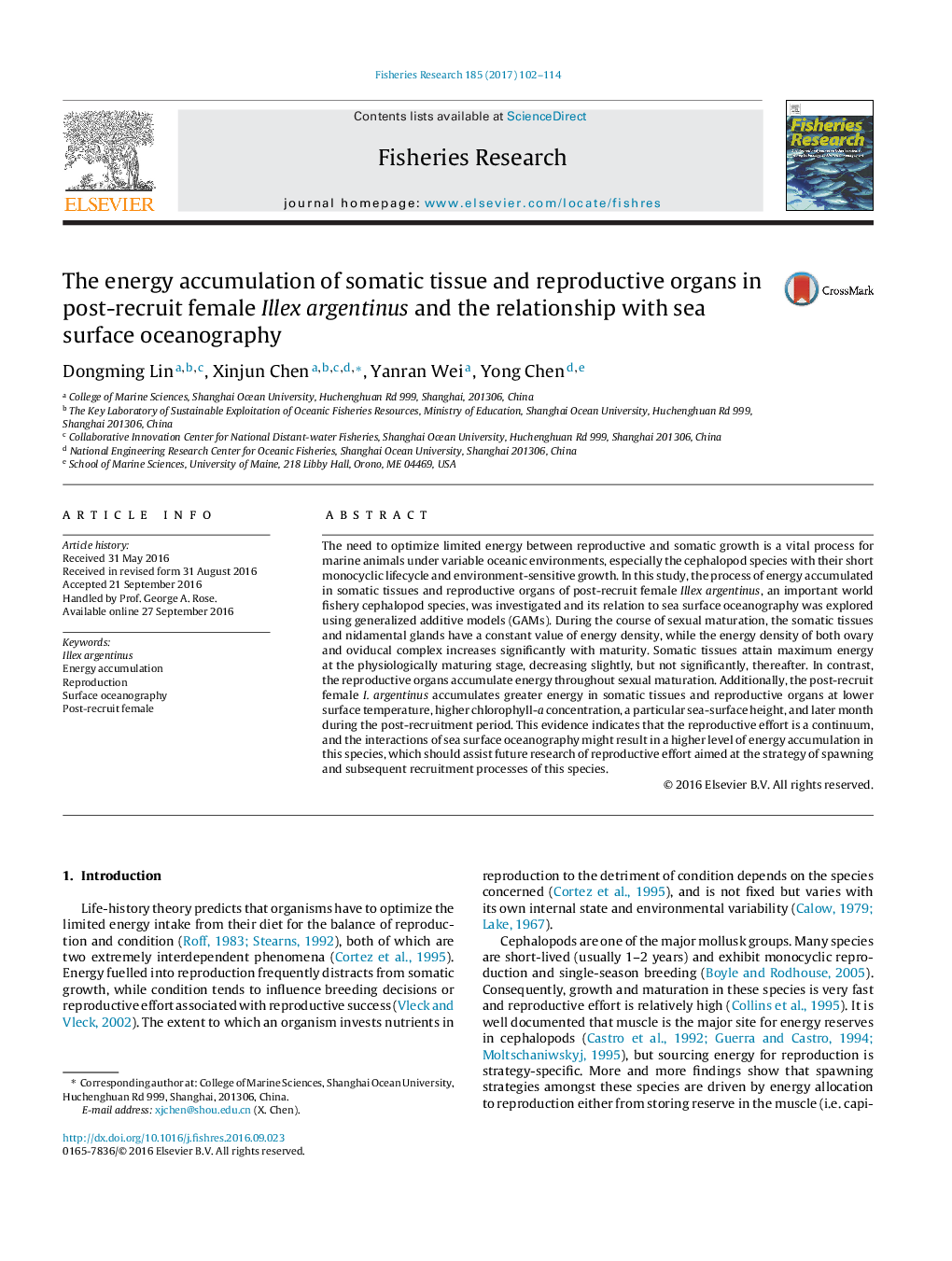| Article ID | Journal | Published Year | Pages | File Type |
|---|---|---|---|---|
| 4542645 | Fisheries Research | 2017 | 13 Pages |
The need to optimize limited energy between reproductive and somatic growth is a vital process for marine animals under variable oceanic environments, especially the cephalopod species with their short monocyclic lifecycle and environment-sensitive growth. In this study, the process of energy accumulated in somatic tissues and reproductive organs of post-recruit female Illex argentinus, an important world fishery cephalopod species, was investigated and its relation to sea surface oceanography was explored using generalized additive models (GAMs). During the course of sexual maturation, the somatic tissues and nidamental glands have a constant value of energy density, while the energy density of both ovary and oviducal complex increases significantly with maturity. Somatic tissues attain maximum energy at the physiologically maturing stage, decreasing slightly, but not significantly, thereafter. In contrast, the reproductive organs accumulate energy throughout sexual maturation. Additionally, the post-recruit female I. argentinus accumulates greater energy in somatic tissues and reproductive organs at lower surface temperature, higher chlorophyll-a concentration, a particular sea-surface height, and later month during the post-recruitment period. This evidence indicates that the reproductive effort is a continuum, and the interactions of sea surface oceanography might result in a higher level of energy accumulation in this species, which should assist future research of reproductive effort aimed at the strategy of spawning and subsequent recruitment processes of this species.
